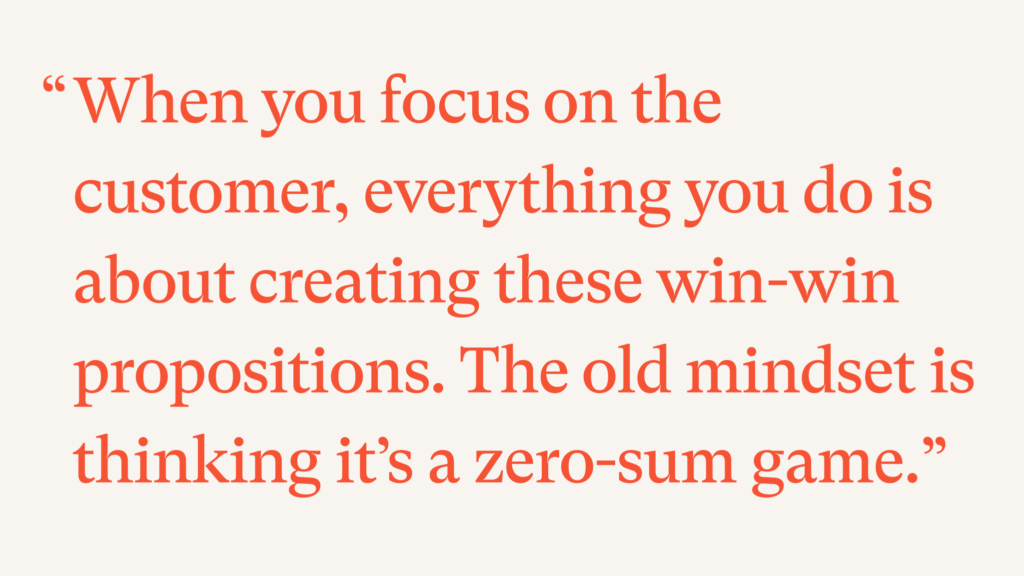A Conversation with Flexport’s Sanne Manders
Shippers • Published on May 3, 2022
This story originally appeared in Convoy’s “The Future of Freight,” featuring 40 thoughtfully curated pages on supply chain disruption, freight procurement, market volatility, and more.

Flexport Chief Operating Officer Sanne Manders says it’s a good time to re-think your supply chain. “Instead of holding onto old patterns and wisdom,” he says, “maybe it’s time to rip things out and think ‘clean sheet.’”
Historically, ocean and over-the-road (OTR) shipping have shared challenges: manual operations, a lag in tech adoption, and little to no real-time visibility. Flexport is the modern freight forwarder, using technology to help shippers manage today’s complexities of global shipping.
Sanne leads operations, procurement, and carrier relations, but more simply, he’s known as Flexport’s digitization expert. We caught up with him to talk about how technology is helping shippers create a more efficient and resilient supply chain of the future.
A: Let’s start with a question on partnership, in the spirit of Convoy and Flexport partnering to deliver end-to-end visibility from ocean to over the road. In what ways do you believe global shippers and supply chain partners could better collaborate to drive a healthier and more efficient supply chain?
S: You want to start with the customer. Our customers want visibility and control of their supply chain, and as a platform for global trade, we work to deliver that value for them. We do it through collaboration. For example, we partner with other freight forwarders to serve our customers in countries where we may not yet have a footprint. In fact, close to 70% of Flexport’s shipments start with another freight forwarder. We opened that ecosystem to them because it helps us, and they get a lot of business because of it. It’s a win-win. When you focus on the customer, everything you do is about creating these win-win propositions. The old mindset is thinking it’s a zero-sum game. The modern brokerage focuses on creating value for both customers and carriers. When the customer wins and the carrier wins, we win as well because it makes our platform stickier.

A: You mention “the modern brokerage.” Historically, brokerage services in both ocean and OTR have been inherently transactional, relying on manual, siloed processes that are both inefficient and error-prone. What qualities or characteristics must supply chain partners have to be that strategic advisor and help shippers navigate the uncertainty of the future?
S: Supply chain partners should have a willingness to try new things and constantly improve. If we don’t experiment, we will just create a digital copy of the old world. Our goal should be unlocking new opportunities through data. This can only happen when you fully digitize your supply chain so you can get better quality data in real time.
Digitization is key. Humans should apply their judgment and problem solving; automation should do anything repetitive and transactional. Eliminate the manual processes that create waste. And you can’t get to the promised land with half of your partners still using those manual processes, email, and spreadsheets. Be sure you bring everybody along.

A: The cloud, Internet of Things, and machine learning all amass incredible amounts of data and visibility and empower us to make decisions more quickly. How can technology help create a more resilient supply chain? How do you believe technology will change the future of supply chains?
S: In 2014, supply chain leaders told me digitization was a nice-to-have. Today, everyone agrees it’s a necessity. You need real-time information to make good and fast decisions in our complex world. This comes down to the OODA loop: 1) Observe through data, 2) Orient or problem solve, 3) Decide, and 4) Act. Do this faster and faster and you will become more resilient and out-compete anyone else.
To run that OODA loop quickly, you need a central database for data storage. You can’t do that if you have an old AS/400 system from the ՚80s, so make the investment in your infrastructure every five to six years. Our platform was seven years old, so we made the decision to maintain our existing platform while we build a new one in parallel.
A: As you’ve mentioned, digitization helps shippers be more agile in their decision making, so they’re prepared no matter what comes their way. How else can supply chains be more prepared to handle ongoing volatility?
S: Everything is currently under pressure with lots of constraints, but the big wild card is how demand will evolve in the near future. Leading indicators show it’s slowing. If consumer confidence starts changing and people start to buy more services than goods, you might get a slowdown of global trade and possibly a bullwhip effect because we have so much inventory. Market dynamics could look very different a year from now.
To be resilient, be realistic in your expectations and plan for volatility. If you keep fighting the state of the industry, you’re putting yourself at a disadvantage. Optimize for what is materially impacting your business instead of trying to fight it, and make sure you have the right logistics providers to help you do it. There will always be chaos — as we’ve seen, all we need is another boat stuck in the Suez Canal. When that happens, you want a problem solver that can offer you options.
A: How do you think this has impacted the way shippers are building their supply chains and transportation networks?
S: It’s a good moment to re-think. Instead of holding onto old patterns and wisdom, maybe it’s time to rip things out and think “clean sheet.” Imagine what this new world could look like for you — and then enlist freight providers like Convoy and Flexport to help you build it.



